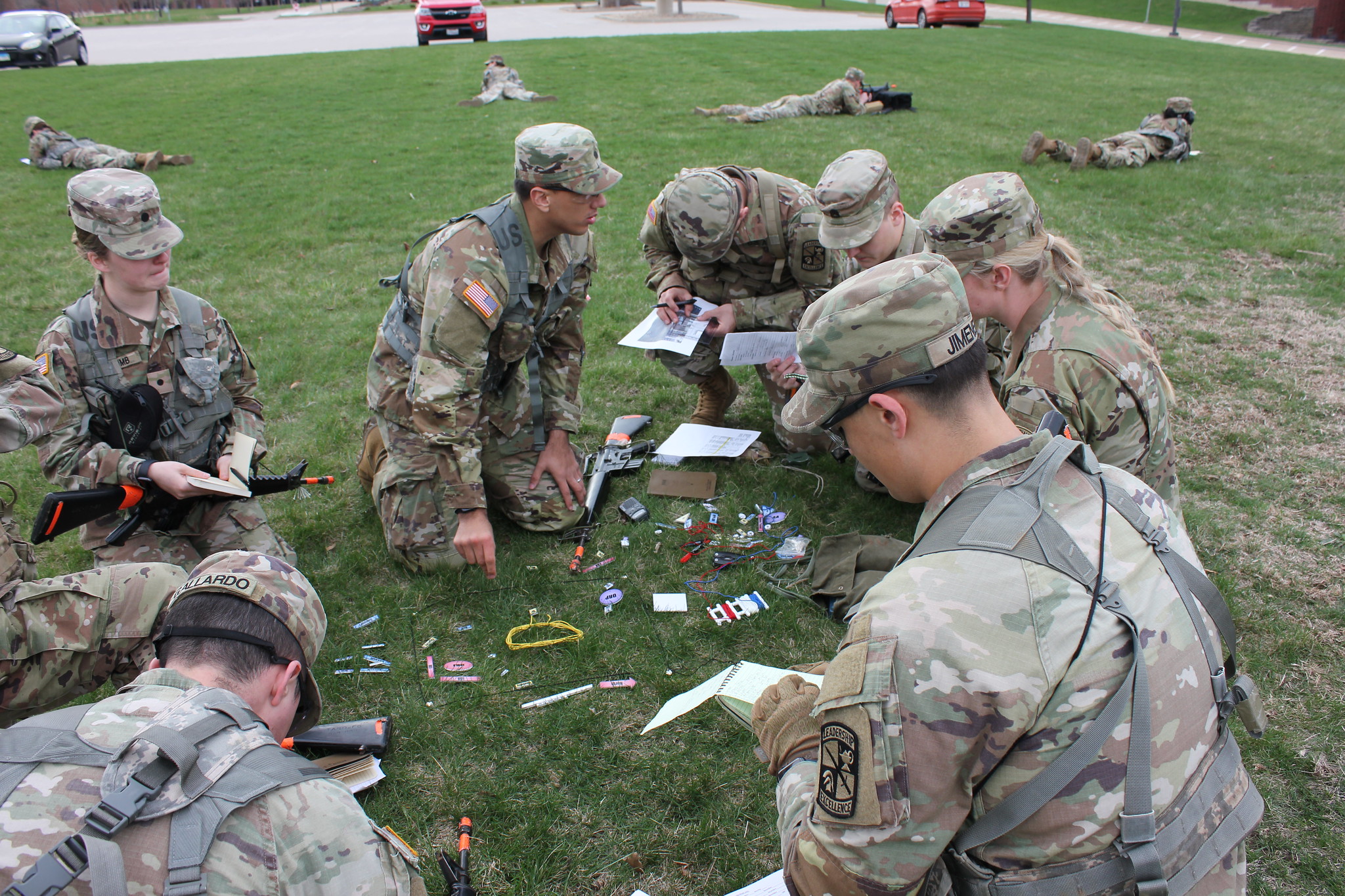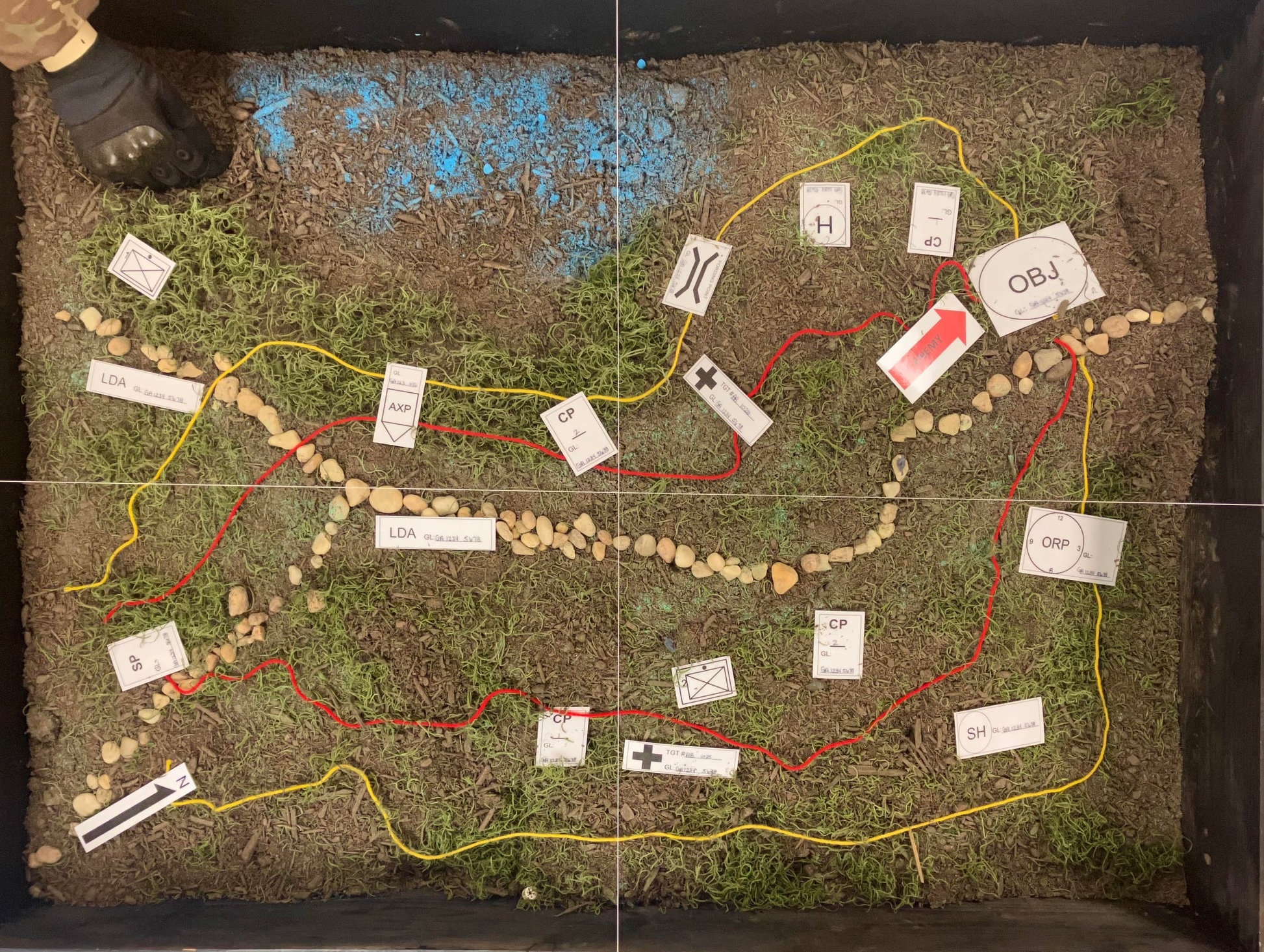EXECUTION
How will we do it?
Reference: TC 3-21.76 (Ranger Handbook)

The Bread Maker
The execution paragraph is the most detailed and lengthy paragraph of the OPORD. During the OPORD brief one should spend most of their time here. This is the HOW of the operation, the instructions. How things are gonna get done. You can never go too much into detail, in fact the more detail, the better so your subordinates know exactly what to expect and what they will do. Hence why this is called the “Bread Maker” most of the important details for the mission will be here.
Commanders Intent
This is the end state the commander wants. This gives you some leeway on how to execute the mission. There might be cases where one can’t do the mission by the book or the operation goes wrong. This let’s the subordinates know what to do if they don’t receive further orders. List what the platoon must do and the conditions to be established. For example: The purpose of this mission is to deny enemy movement into a certain location, the key tasks are to ambush and eliminate the enemy before they move in and the end state is all enemy forces destroyed.
CONOP Concept of Operations
This describes in detail how the platoon will run the mission from start to finish. One provides a general overview of the operation, identifying deceive and supporting operations, and the end state.
You also brief different phases of the operation that include keys tasks that your subordinates must do.
Overview of operation
Give the purpose of the operation, Ex: Deny enemy movement, we must do this to support the higher mission. Then list the decisive and supporting operations, Ex: in an Ambush your DO (Decisive operation), will be the 240B gunners as they are your main casualty producing weapon, your SO(Supporting operations), will be your assault and security elements as they will provide supporting fire and security for the DO
Then list the end state. In this case you’d want the enemy to be destroyed
Phases
List out your phases, In each phase include when it starts and key tasks that must be done, For example:
-
Phase 1: Planning and Preparation, It starts with the receipt of the OPORD and ends with movement, Key tasks include: receipt of information, rehearsals done, PCC’s and PCI’s done
-
Phase 2: Movement, It starts at the end of the OPORD and ends with Leaders Recon, Key tasks include: noise discipline, alertness, and lookout for enemy intel
-
Phase 3: Leaders Recon, It starts at the end of movement and ends with actions on, Key tasks include: ORP security, Weapon emplacement, and Information gathering
-
Phase 4: Actions on, It starts at the end of leaders recon and ends with exfil, Key tasks include: Squad emplacement, enemy elimination and LOA crossing
-
Phase 5: Exfil, It starts at the end of Actions on and ends with receipt of next mission, Key tasks include: EPW/Aid and Litter, Red/White/Blue Withdrawal and enemy intel extraction
Scheme of Movement and Maneuver

Also, plan and brief contingency plans and alternate plans in case something goes wrong. If you will cross any LDA’s then let your platoon know, along with any approved targets and CCP’s
Scheme of Fires
TTLODAC (Target, Trigger, Location, Observer, Delivery system, Attack guidance, Communication) Indicate the fires plan and who has priority, and if they will be used at all.
Let’s suppose we want to call in fires before we raid an objective
- Target: AB 4995, Squad entrenched (We called fires team earlier and setup target AB 4995 which points to EG 8784 9193 where the enemy is at)
- Trigger: After Leaders Recon
- Location: EG 8784 9193
- Observer: Primary: FO, Secondary: PL
- Delivery System: 120mm HE
- Attack Guidance: 8 Rounds, Danger close
- Communication: Primary: FM Radio, Secondary: Smoke signal
You can have multiple of these
Tasks to subordinates
Provide tasks to each specific subordinate element. You give task and purpose and assign special teams
For each squad give them their role
- Assault 1
- Assault 2
- Security
- Weapons
Special teams include:
- EPW (Also assign secondary)
- Aid and Litter (Also assign secondary)
- Demolitions
You can also brief other special instructions in this section
Coordinating instructions
This will always be the last subparagraph in Execution. List complex instructions and anything that is not covered in SOP’s and cover 2 or more elements
You can list:
- Timeline: Inspections, movements, uniform, when tasks must be done
- Commanders critical info requirements: Include PIR (Priority Intelligence Requirement) and Friendly Force Information Requirements (FFIR)
- PIR: All intelligence that the commander needs for planning and decision making
- FFIR: What the commander needs to know about friendly forces, personal status, ammo status and leadership capabilities
- EEFI (Essential Elements of Friendly Information): critical aspects of operation, if known by enemy could compromise, fail, or limit the success of the operation
- Risk reduction control measures: Supplement the units SOP, prevents risk
- ROE (Rules of engagement)
- Environmental considerations
- Force protection
- Contingency plans
- MASCAL plan
Closing
This is the heaviest paragraph